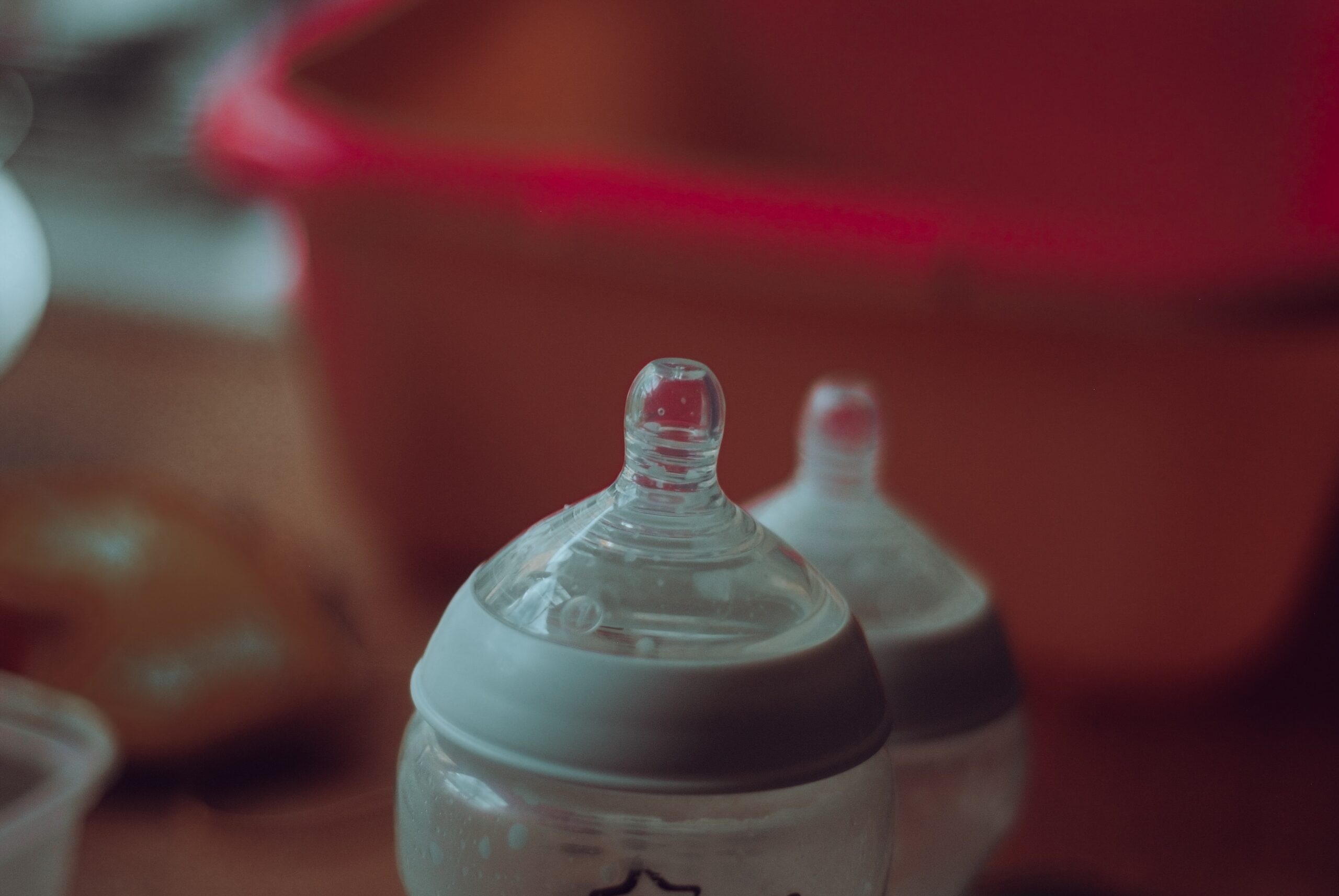15 December 2022

A new study found microplastics from plastic packaging and bottles contaminate baby formula, which may lead to adverse health effects. Image credit: Jaye Haych via Unsplash.
AGU press contact:
Rebecca Dzombak, [email protected], +1 (202) 777-7492 (UTC-5 hours)
Contact information for the researchers:
Qiji Zhang, Nanjing University, [email protected](UTC+8 hours)
CHICAGO — Baby formula powder sold in boxes contains significant levels of microplastics when the inside is laminated with aluminum foil and polyethylene, according to new research being presented at AGU’s Fall Meeting on Friday, 16 December.
Microplastics have been found in food products as varied as table salt and beverages, and while it’s a burgeoning field, some researchers believe consuming microplastics could be harmful to humans, potentially causing intestinal inflammation, neurotoxicity and immune stress. Polyethylene packaging could be a source of microplastics to the foods contained within, but this pathway remains largely unknown.
In the new research, scientists examined 13 varieties of baby formula powder stored in different types of containers to test for the presence of microplastics and whether they might come from packaging.
“Milk powder is a substantial component of an infant’s diet. However, no investigations have been done to determine whether milk powder contains microplastic contamination,” said Qiji Zhang, a chemist at Nanjing University in China who is presenting the research. “The task of understanding the threat to infants, one of the most vulnerable groups, is even more urgent.”
Zhang’s team used a chemical process to simulate the digestion of milk powder by infants. They used commercially available gastric fluid to simulate stomach digestion, and pancreatic enzymes to simulate intestinal digestion. They used these processes to confirm the amount of plastic in the formula — once the organic matter was dissolved, the plastic was all that remained. They also tested how the plastic content of the formula compared to the amount of microplastic that leached from baby bottles and from other sources during the process of mixing formula.
Microplastics were widely found in milk powder, and boxed formula powder has more plastic pollution than canned formula powder.
The boxed baby formula powder mostly had inner linings made of polyethylene plastic and aluminum foil. An analysis of the microplastics revealed they likely came from the inner package in the box.
Zhang said it’s possible that other sources may contribute to microplastic contamination during the manufacturing process. Protective clothing worn by factory workers is often made of polyethylene terephthalate, a type of plastic, and masks and hygiene caps also have plastic in them. Each of these sources could contaminate baby formula powder.
“There are strict cleaning and sterilization standards during milk powder processing,” he said. “However, microplastic contamination has yet to be considered.”
Zhang recommended reducing the use of polyethylene and aluminum foil to contain baby formula powder. Agencies or organizations that make standards for cleanliness or sterilization of products should also consider including microplastic contamination in their specifications, he said.

Boxed baby formula has more microplastic contamination than canned formula due to the inner packaging made of polyethylene plastic and aluminum. Image credit: Ajay Suresh via Wikimedia Commons.
At the same time, the level of microplastic is often much higher if babies drink from plastic bottles, Zhang said. The levels of microplastics that leaches from polyethylene bottles while babies feed is 6.7 times higher than what they are exposed to from the baby formula powder itself. And the process of mixing formula powder might produce microplastics 1.7 times higher than formula powder itself. Zhang said the extra plastic during the latter process might come from the preparer’s clothes or from the air itself.
“In other words, if caregivers choose glass feeding bottles and brew milk powder carefully to avoid microplastics from clothing and air, most of the microplastic exposure can be reduced,” Zhang said.
###
AGU (https://www.agu.org/) is a global community supporting more than half a million advocates and professionals in Earth and space sciences. Through broad and inclusive partnerships, we advance discovery and solution science that accelerate knowledge and create solutions that are ethical, unbiased and respectful of communities and their values. Our programs include serving as a scholarly publisher, convening virtual and in-person events and providing career support. We live our values in everything we do, such as our net zero energy renovated building in Washington, D.C. and our Ethics and Equity Center, which fosters a diverse and inclusive geoscience community to ensure responsible conduct.
Notes for journalists:
Qiji Zhang will present this work at AGU Fall Meeting 2022, in Chicago and online everywhere. For more information, see the Press Center.
Presentation abstract:
GH51A-03 Microplastics in infant milk powder
Friday, December 16
8:16 – 8:22 a.m. CT
Online only